15 things that you should never put in a microwave, according to experts
Microwaves are one of the handiest ways to cook and prepare food, but these food items and household utensils don't belong in them

Microwaves are one of the most helpful kitchen appliances – but it sometimes feels like we're never quite sure which foods and kitchen items are microwave safe or not leaving us to question what things should you never put in a microwave?
Can you put plastic in the microwave, for example? What about tin foil? And should sauces ever be reheated in the microwave? It's normal to be a little wary, as there are some important health and safety factors to consider when using this kitchen essential.
"The main risk with using microwaves falls down to three key points. A fire hazard, food poisoning, and burns, " professional chef Dennis Littley explains to w&h.
"You must make sure your food can withhold its heat, but also that the packaging is able to be microwaved. You must also make sure you cook the right food in a microwave, to avoid a bout of food poisoning. And, if you cook certain foods in the microwave, it can potentially leave you with some nasty burns."
But before you panic, it's unlikely that you're going to cause any serious damage with your microwave – though it pays to be aware! We spoke to chefs and appliance cleaners to consolidate the 15 things you should never put in your microwave – for both your health and to help you avoid cleaning your kitchen for hours on end...
15 things you should never put in a microwave
1. Styrofoam
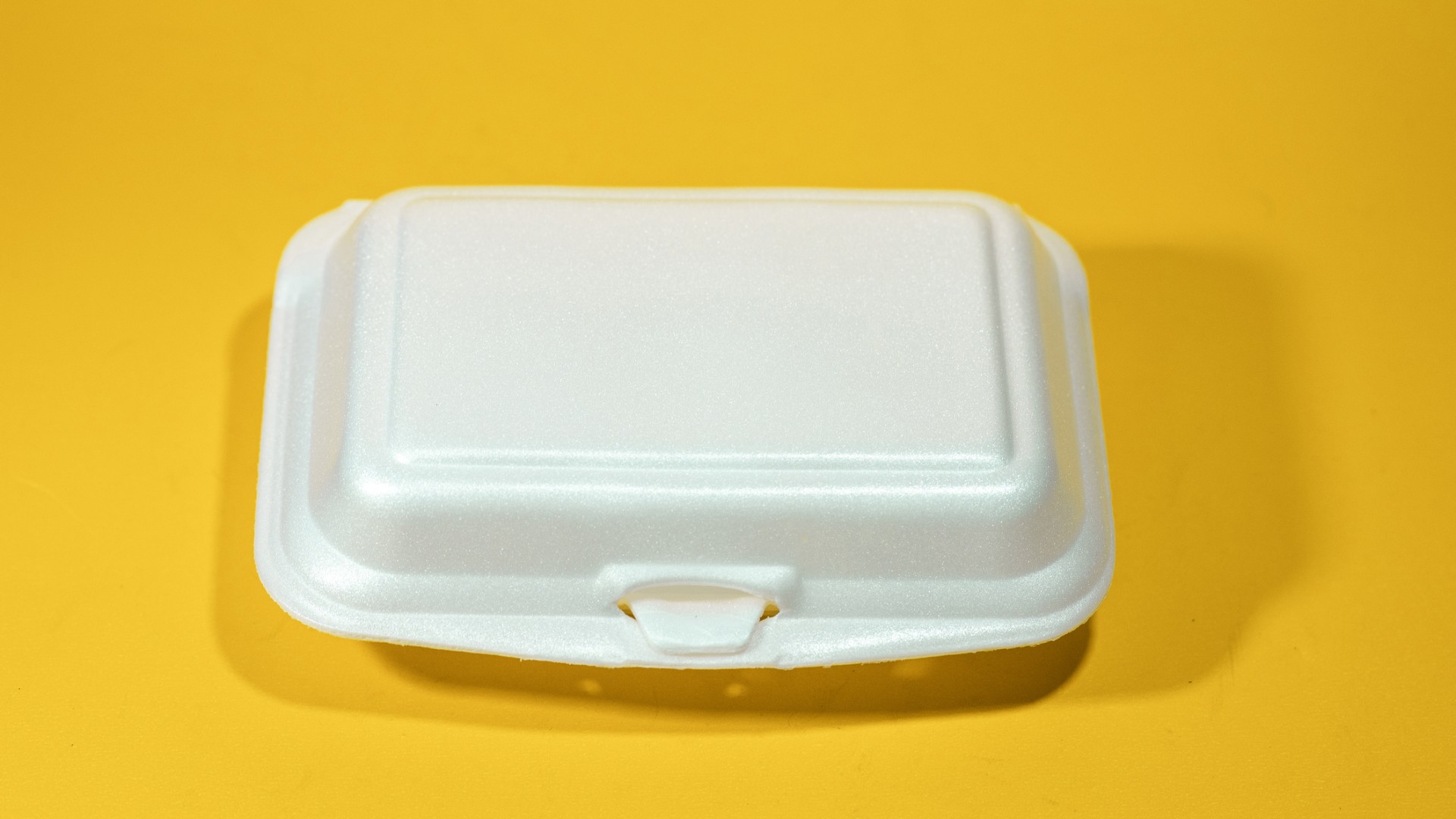
It's one of the most frequently Googled questions, can you put Styrofoam in the microwave? The answer is no, and experts have explained to us why it's a bad idea.
If you've got yourself a takeout that has come in a styrofoam box, it may be tempting to reheat it in the same box the next day, for example. But, Shirley Langridge, a professional appliance cleaning technician at Fantastic Services, explains how this could have serious health implications.
Sign up for the woman&home newsletter
Sign up to our free daily email for the latest royal and entertainment news, interesting opinion, expert advice on styling and beauty trends, and no-nonsense guides to the health and wellness questions you want answered.
"Styrofoam contains chemicals like benzine and styrene, which have been known to cause cancer," she said. The risks of these chemicals are heightened if you pop styrofoam in the microwave, as, at high temperatures, the chemicals can break down and potentially leach out into your food.
"To be safe, the next time you need to heat something that’s been stored in styrofoam, take the food out of the container and put it on a plate wrapped in a paper towel," Shirley advises.
2. Plastic containers and bags
One item that experts say shouldn't go in your microwave is plastic containers and bags, such as the packaging that much of our food comes in – and yes, even your own plastic food storage containers used to organize the fridge. Who would have guessed?
"A lot of our food nowadays comes packaged in plastic, and it’s best to remove it before you insert the item into the microwave, especially if it isn’t labeled 'microwave safe'," suggests Shirley. The same applies to containers.
"This is because, when heated to high temperatures, plastic emits toxic fumes and chemicals that can seep into your food. This can have side effects on your health."
The chemicals include things like BPA (bisphenol A), an industrial chemical that has been used to make plastic for years, and phthalates, a substance added to plastic to give it that movable quality. Many plastic containers are now being made without BPA though – and so will be marked as BPA-free. So if it has this mark, or is deemed to be specifically for use in the microwave, it can generally be considered safe to use.
However, it may be better to use an alternative. Options include glass or ceramic containers, which can be bought online or in most stores. Shirley adds, "if you want to cover your food, it’s best to use a paper towel instead of a plastic wrap, like cling film or saran wrap."
3. Tin foil
According to the experts we spoke to, perhaps one of the most important things to *never* put in your microwave is tin foil, because of the potential damage it may cause.
When asked which items people should never put in the machine, Dennis explained, "The main one – and one still to this day people do – is tin foil."
Tin foil can be a conductor of the electric charges in microwaves, and because it is thin with a sharp edge, if surrounded by strong currents, it can get overwhelmed and can heat up super quickly. This can potentially cause sparks, or even a fire, inside your microwave. It's the reason you also never use a knife when cleaning a toaster.
"This is super dangerous – and it's not just as a fire risk. It can totally break your microwave too," Dennis said.
While some advise that putting small amounts of tin foil in your microwave is safe, we reckon it's better not to risk it, and avoid it altogether. If you want to cover food, try placing cling film or a microwave-safe lid over it instead.
4. Hot chilli peppers
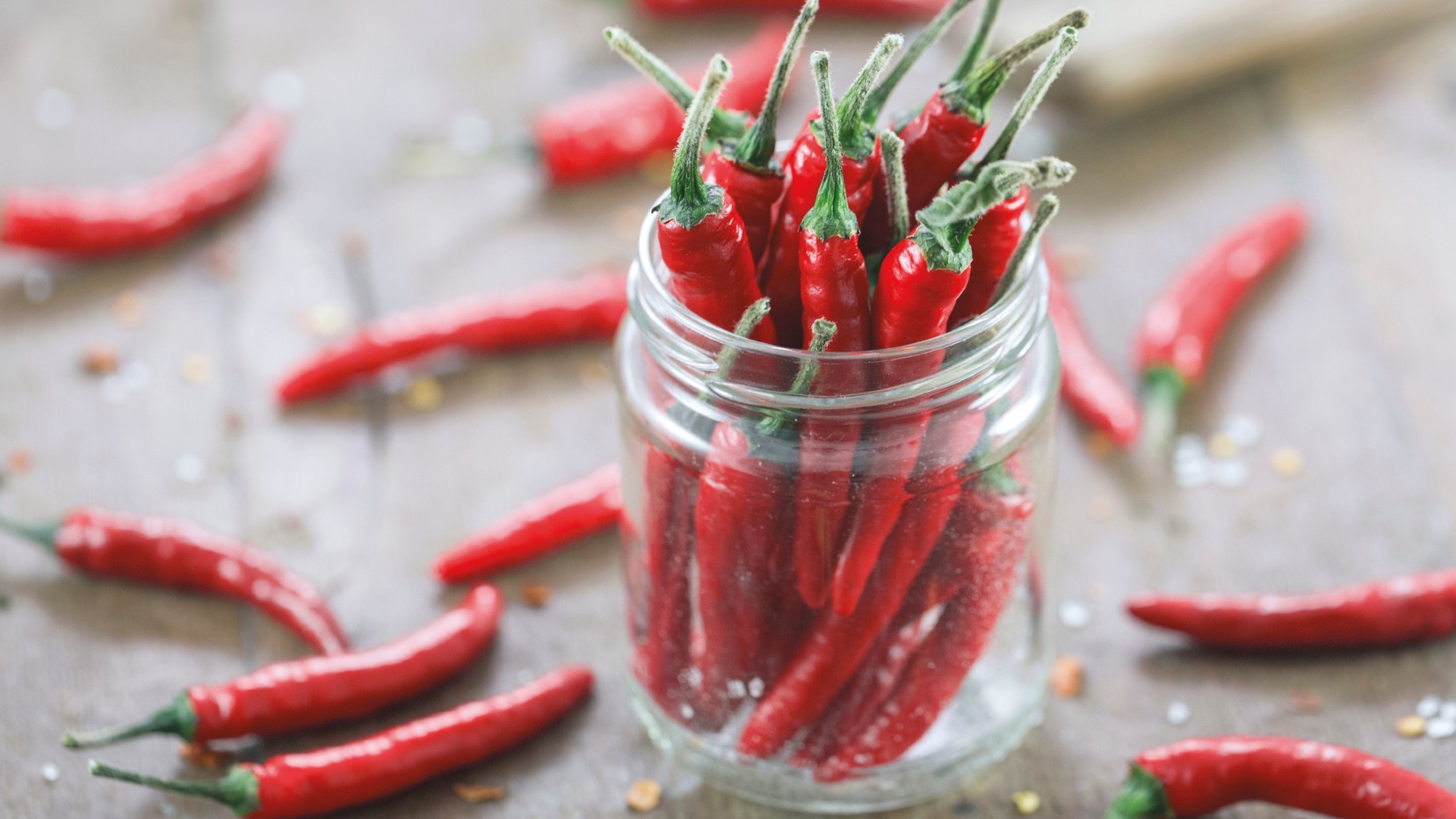
This one might surprise you, but putting hot chilli peppers (e.g spicy) in your microwave is also a huge no-no – and for a rather terrifying reason!
Shirley revealed, "Many things can go wrong if you put hot peppers in the microwave. For one, the ingredient that makes them spicy vaporizes when in the microwave – and when those vapours come into contact with your throat and eyes, they can cause a stinging sensation, similar to pepper spray." Dennis continued, "Essentially, the heat in the microwave is too much for the fragile (yet fiery) pepper, so once you open that door, the chemicals can burn your eyes."
And it's not only fresh chilli peppers that can be dangerous in a microwave. Shirley said, "What’s even more dangerous is that microwaved peppers can explode or catch on fire especially if they’ve been dried."
So if you ever need to reheat or heat up spicy chillies, you're best advised to pop them on the stove or in the oven, in order to avoid a seriously painful outcome.
5. Tomato sauces
If you've ever tried to reheat a tomato pasta sauce from the night before in your microwave, you'll likely be familiar with the 'pops' of sauce that occur throughout the re-heating process. This is normal – but it's for that reason that Dennis advises against reheating tomato sauces in there, if you can.
"There's no immediate risk as such – but when you put tomato sauce in a microwave, there's more of a risk of having a super messy microwave and kitchen! This is because tomato sauce can’t withhold the heat that a microwave produces, so chances are it’ll end up a splattered mess."
So if by chance you do reheat a tomato sauce in the microwave, it seems it's well worth learning how to clean a microwave properly...
6. Leafy greens
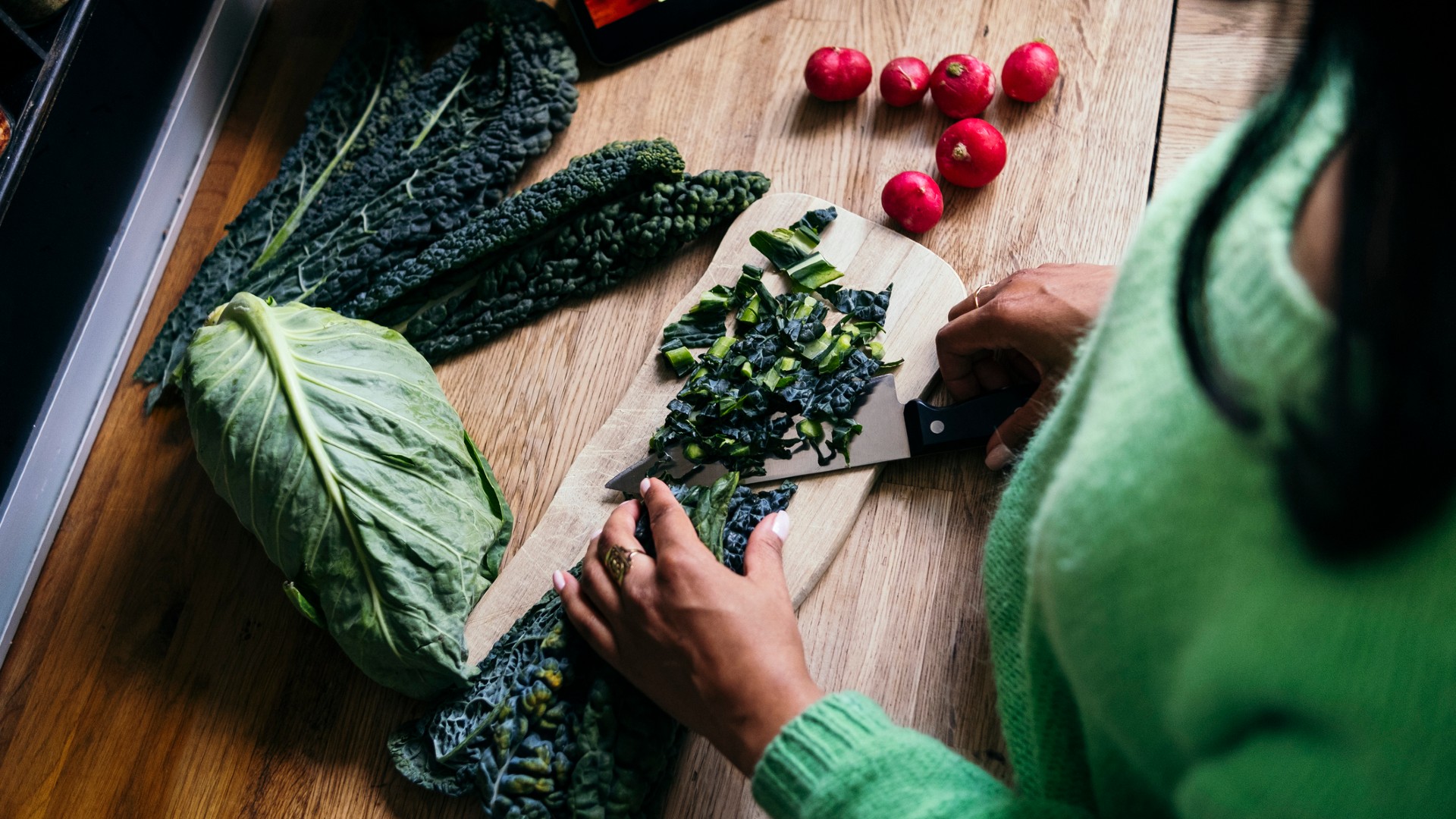
Another option you may not have expected is leafy greens – such as spinach, chard, kale, and cabbage – although they also fall under the top things of what not to cook in an air fryer. However, there is a caveat to this one. Our experts advise that you should never cook leafy greens dry in your microwave. Generally, putting leafy greens in your microwave is safe, but they should be cooked with a little bit of water added to them.
Dennis explained, "Leafy greens need moisture to cook, so putting them in dry can again cause a fire hazard. They’re very fragile and can catch fire pretty rapidly."
If, however, you follow proper guidelines on storing and reheating leafy greens (e.g don't put them in without water!), the European Food Information Council advises that putting them in your microwave is safe.
7. Whole fruits
You might be tempted to stew fruit in the microwave for a quick result. But there are two reasons why putting whole fruits (e.g fruits with the skin left on) – be it grapes, apples or blueberries – in the microwave is a bad idea.
The first reason is that any health benefits we get from the fruit can be potentially eradicated by the high heat of a microwave. "If you stick any kind of fruit in the microwave, it’ll most likely lose its essential nutrients. Some of the main vitamins found in fruits – including vitamin B and vitamin C – are moved into the water during the microwaving process, meaning they essentially lose their beneficial properties.
And that's not the only thing to worry about if you microwave whole fruits. You might also be risking an explosion of hot fruit matter! "When grapes, for example, are put in the microwave, they quickly turn into a sort of plasma, which creates a mini explosion in the process," Shirley said. This is because microwaving fruits with a skin on doesn't allow the ever-hotter moisture inside to escape – resulting in a seriously overheated inner flesh that can burn you (and less importantly, your microwave) if it gives in to the pressure and explodes.
"Besides that," Dennis adds, "The skin will scald and blister, and will ruin the fruit – eventually causing a nasty taste anyway."
8. Whole eggs
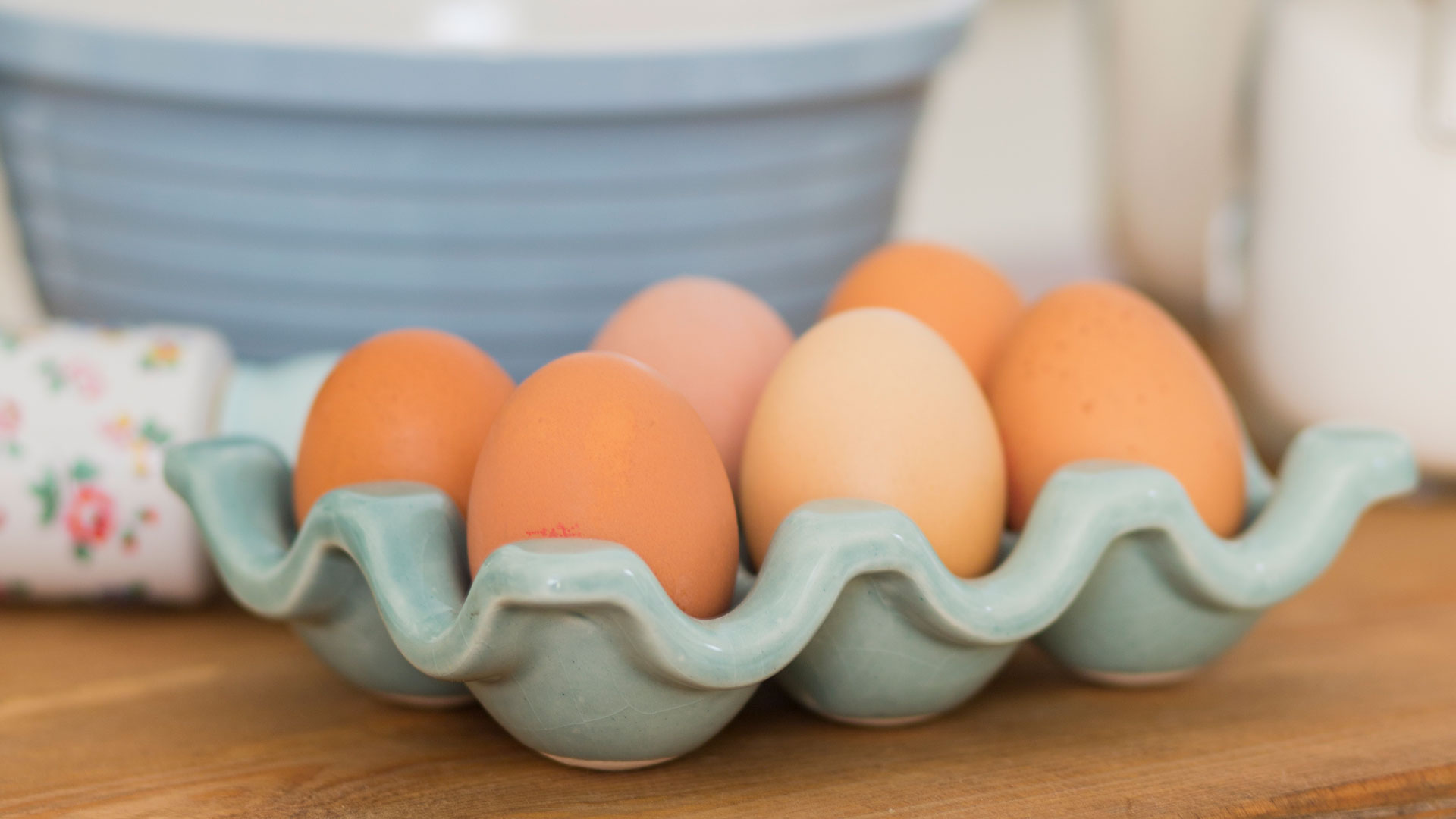
It's unconventional, but you might be tempted to microwave your eggs for a quick hard-boiled breakfast. If so, think again.
Microwaving a whole egg (e.g unpeeled) is both ineffective and slightly hazardous. Instead of slowly cooking the inside of your egg to the perfect consistency, a microwave will essentially zap it full of lots of heat – and without a way for that pressure to escape, there's likely to be a bit of a mess.
"When eggs are heated up to high temperatures, like the ones produced in a microwave, steam builds up inside them," Shirley said. "If the eggshell is completely intact, the steam has no way to escape, collecting in the top and resulting in the egg exploding. You won’t have a delicious breakfast – but a mess to clean up instead." Because of this, the best way to enjoy a hard-boiled egg is still to pop it in one of the best induction pans you have and cook it on the stove.
However, this rule doesn't apply to eggs outside of their shell. If you still prefer to make your scrambled eggs in the microwave for example, rather than on the hob, this is perfectly safe and a great way to quickly enjoy eggs without the hassle of getting a pan out.
9. Takeaway containers
Similarly, reheating a takeout that may have cooled down in transit, or from the night before, in those plastic, clear containers they come in always feels like the easiest option. But it can be potentially fairly dangerous, so you're probably going to want to avoid it. Dennis told us, "Takeaway containers can be a huge fire hazard. Often, Chinese takeaway containers will have some metal wiring hidden away. And if this hits the microwave, it can potentially blow up and cause a fire."
If you do want to reheat your takeout, the safest option once again is to take it out of its original container and place it in, or on, a microwave-safe bowl or plate. Or, you might even want to reheat it in a pan on the stovetop (the best cookware sets can help with this). Whichever you choose, either of these options are far safer than microwaving it in its original packaging.
10. A mug of water for tea
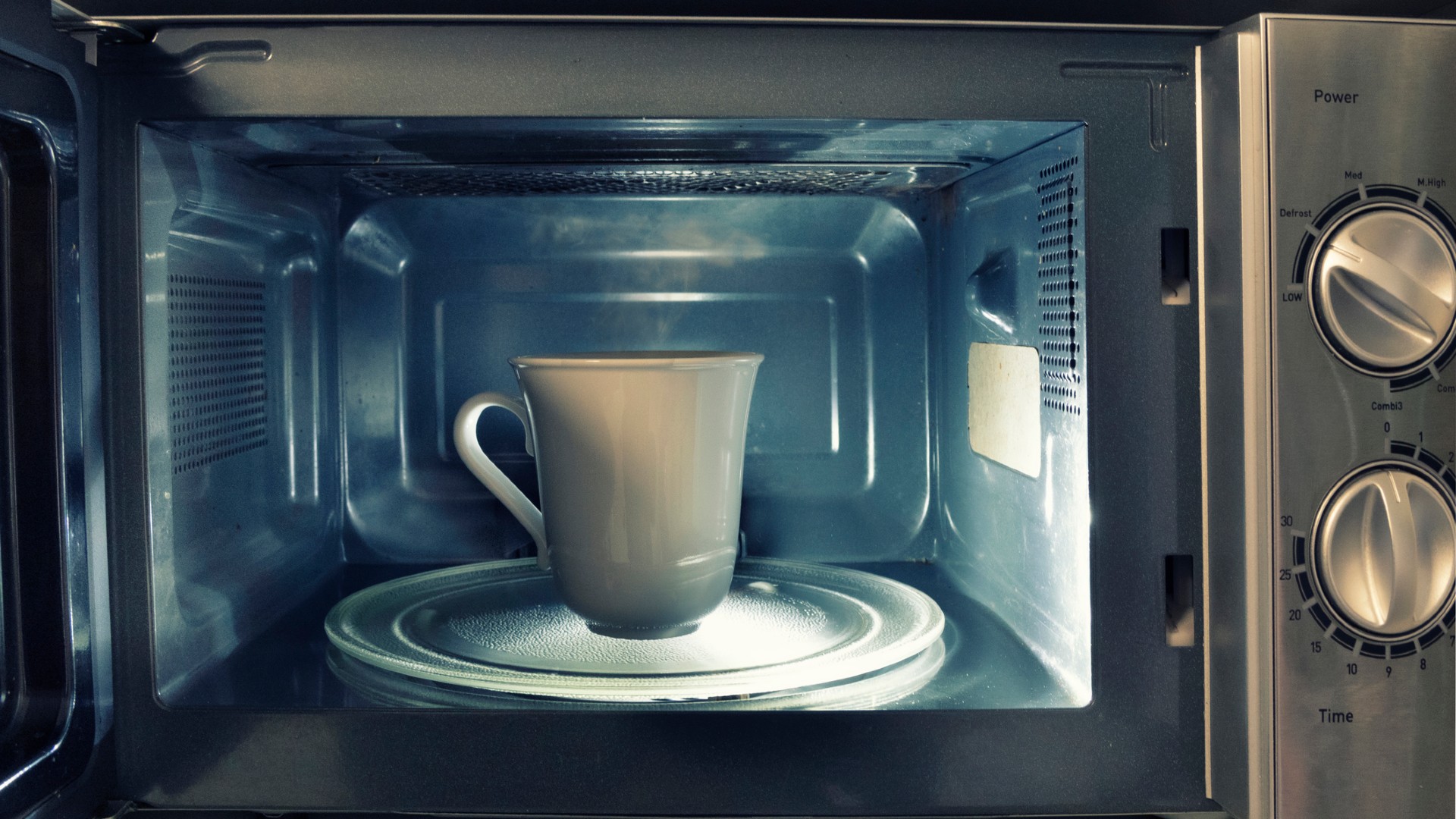
For the Brits among us, this may be an alien concept – but for those Stateside, boiling a mug of water for tea isn't all that unusual. But whatever your prerogative on the idea of heating (or reheating) a mug of water in the microwave, it's worth noting that according to the experts, it's not a good option. This is because of the way in which it can change the taste of your tea.
Shirley told us, "After spending enough time in the microwave, water can come to a super-heated state without actually having ever come to a boil. And if you're heating water for tea, this super-heated water can ruin your teabag.
"Besides that, different types of tea need their water set at different temperature points. To get your water to a proper boil, use the stove burner or a kettle, even if you have to wait for a few more minutes."
Heating a mug of water in your microwave can also affect the temperature throughout the liquid – which can be slightly dangerous if you're not careful when it comes to drinking it. Heating your tea in the microwave can also result in an uneven temperature, with the water at the top generally being much hotter than the liquid at the bottom. This is also likely to result in a pretty unpleasant tasting experience!
11. Fish
This one is also a matter of taste and food quality, rather than any safety concerns. Reheating fish in a microwave is a perfectly viable option, so long as it has properly cooled down, and been suitably stored in the interim. But it may not result in a meal that tastes as good as it could.
"Fish is a delicate food, and using a microwave to reheat it will only dry it out," Shirley said. "If you insist on reheating fish leftovers, it’s best to do it on the stove or in the oven."
But if microwaving fish is your only option, you're probably going to want to take a look at these kitchen cleaning hacks for removing unsavory scents from your cooking space...
12. Processed meats
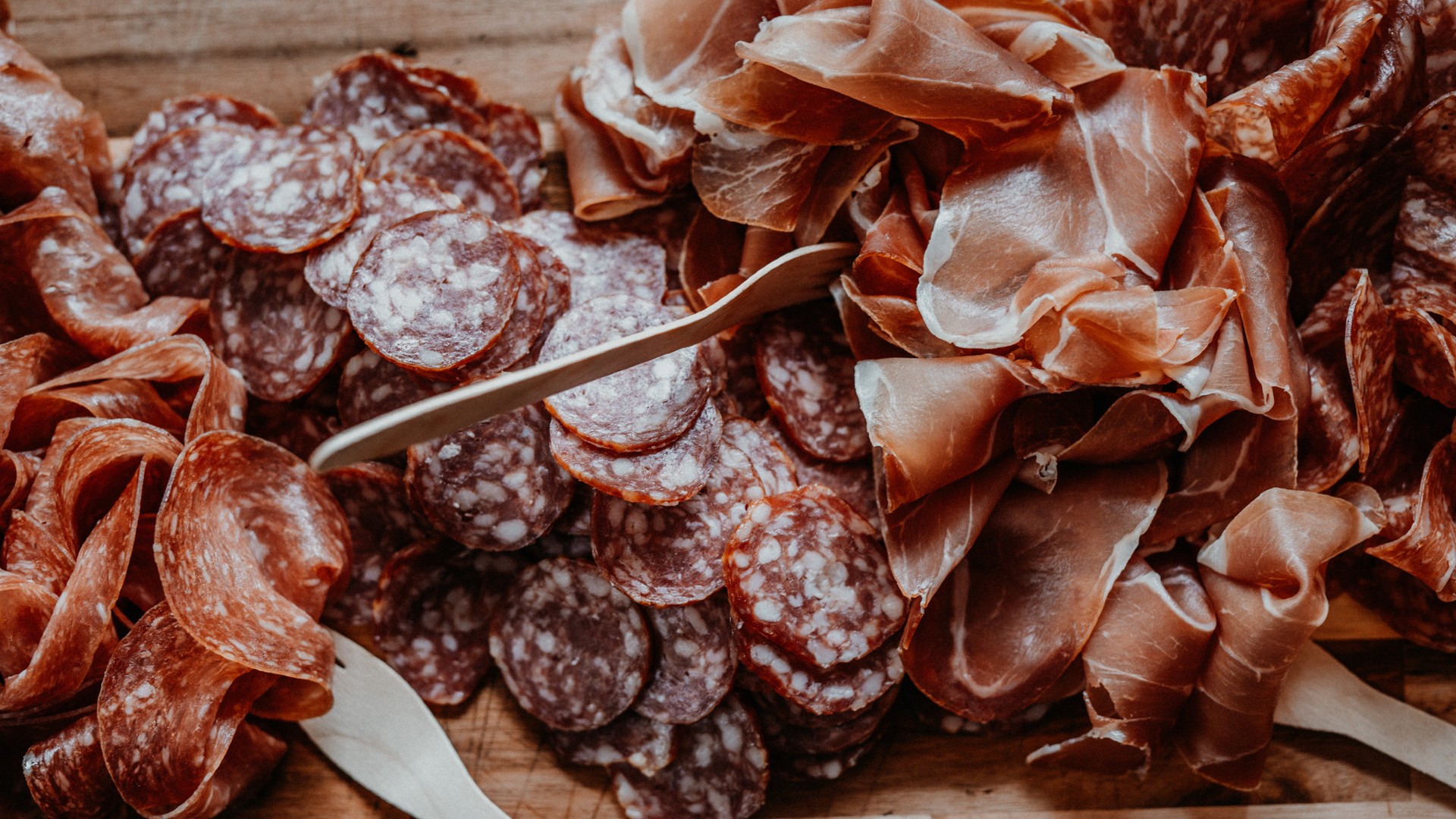
Technically, putting processed meats – such as hams, deli meats and bacon – into your microwave is safe, in that there is no immediate danger to your health if you do so. However, Shirley explained that microwaving these food types could increase their more unhealthy properties even further.
She told us, "Many people have probably told you that processed meats, such as hot dogs and beef jerky, are bad for your health. But what’s even worse is putting them in the microwave.
"Processed meats contain chemicals and preservatives to extend their shelf life, and they don’t react well when exposed to microwave radiation. Studies have shown that microwaving processed meats can result in increased production of harmful chemicals, known to cause heart disease due to increased amounts of cholesterol."
In order to avoid this risk, Shirley advises cooking any processed meats – or reheating them – on your stove in a pan instead. Sure, they're still not the very best option for our heart health, but you're far better off cooking them this way than in your microwave.
13. Paper bags
Popping a paper bag in your microwave to reheat leftovers may seem like a good idea, but it's ill-advised in two different ways. Firstly, Dennis explains that: "They can burn and catch fire very easily." This is because paper bags aren't generally designed to withstand the heat of a microwave.
However, Dennis assured that "Popcorn bags tend to be okay as they’re manufactured to deal with high microwave heat." Though if you want to be on the safe side, you could always heat up your popcorn on the stove in a pan.
In addition to this, the U.S. Department of Agriculture Food Safety and Inspection Service explains that some paper bags have ink on them, that could produce toxic fumes when heated up in a microwave. We reckon you're best avoiding this one.
14. Travel mugs
If you regularly commute to work or like to go on day trips, using one of the best coffee travel mugs is an absolute essential. But, it's not a good idea to pop it in the microwave if you're looking to warm up your coffee, tea, or hot chocolate before heading out – because it's likely to have very little effect on the actual temperature of your beverage.
"Travel mugs are typically made of metal, and the lining in the mugs will prevent the liquid from getting warmed up," Shirley told us. "This lining can also damage your microwave – and if it’s heated for long enough, the metal can even catch fire."
15. Nothing

That's right – oddly, one of the most dangerous things to put in a microwave, is nothing at all. It's unlikely that many of us are doing this, but if you do happen to leave yours on without anything inside, know that it may be harming the inside of your machine.
"It sounds silly, but sometimes I see people using a microwave to heat it up prior to cooking (like an oven would) but this can seriously damage the interior of your microwave," Dennis said.
How? Shirley explained, "If there’s no object inside a microwave while it’s turned on, there’s nothing to absorb the electromagnetic waves that are put out. They return to the magnetron – the part of the microwave that created them in the first place. If this goes on for long, it can destroy the appliance and cause it to explode or catch on fire."
Amy Hunt is an experienced digital journalist specialising in homes, interiors and hobbies. She began her career working as the features assistant at woman&home magazine, before moving over to the digital side of the brand where she eventually became the Lifestyle Editor up until January 2022. Amy won the Digital Journalist of the Year award at the AOP Awards in 2019 for her work on womanandhome.com.
-
 We thought Michelle Monaghan looked incredible in The White Lotus, now her makeup artist has finally told us why
We thought Michelle Monaghan looked incredible in The White Lotus, now her makeup artist has finally told us whyThat finale left us with so many questions - and they're mostly about Michelle Monaghan's fresh complexion...
By Naomi Jamieson Published
-
 Forget-me-not blue is the pastel Duchess Sophie always comes back to - it might've overtaken pistachio as our favourite this season
Forget-me-not blue is the pastel Duchess Sophie always comes back to - it might've overtaken pistachio as our favourite this seasonThe royals love wearing a range of colours for engagements and visits, but there are a few hues that each of them gravitate towards the most.
By Emma Shacklock Published
